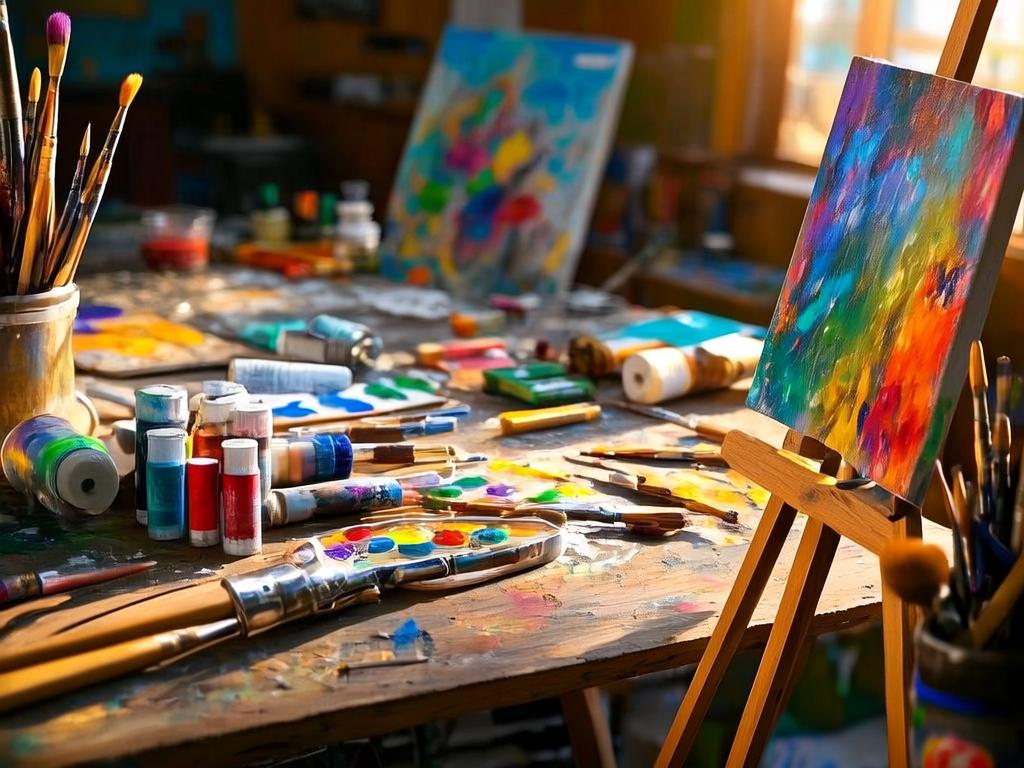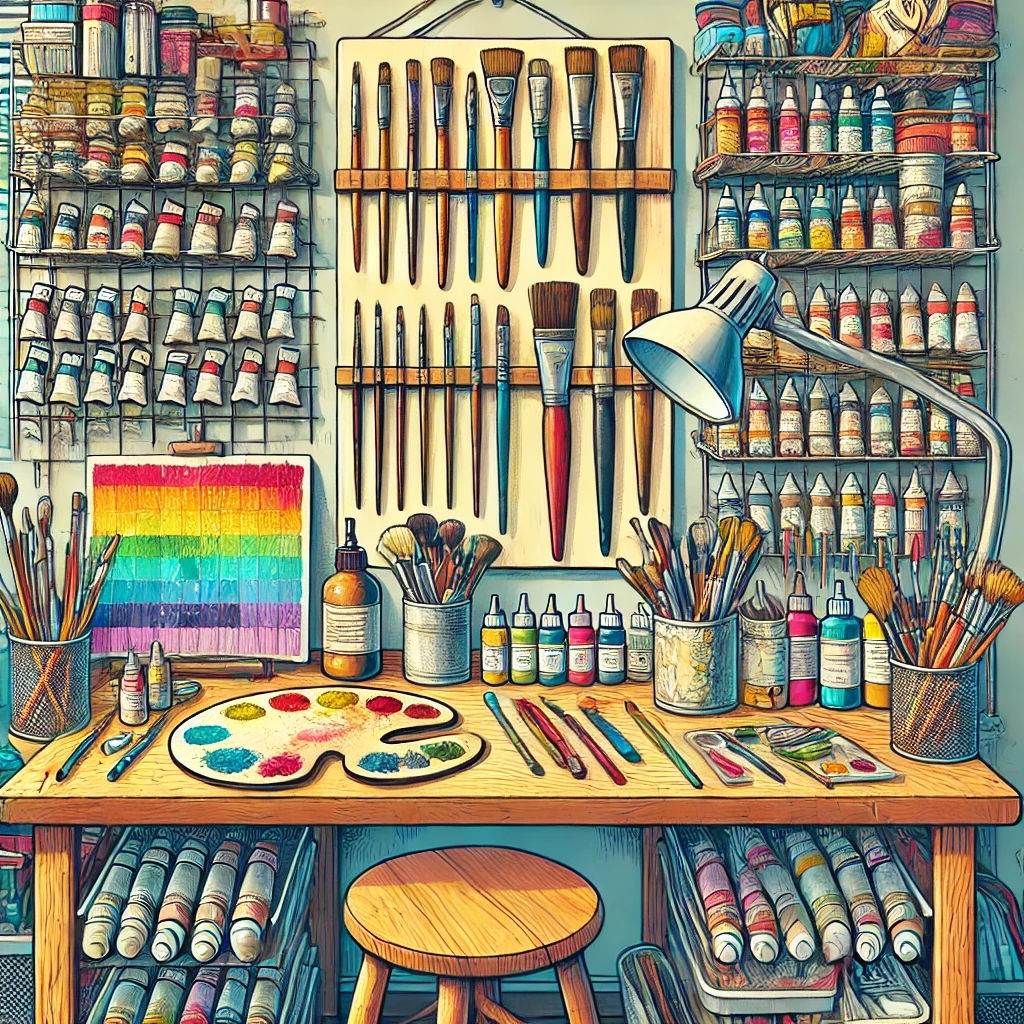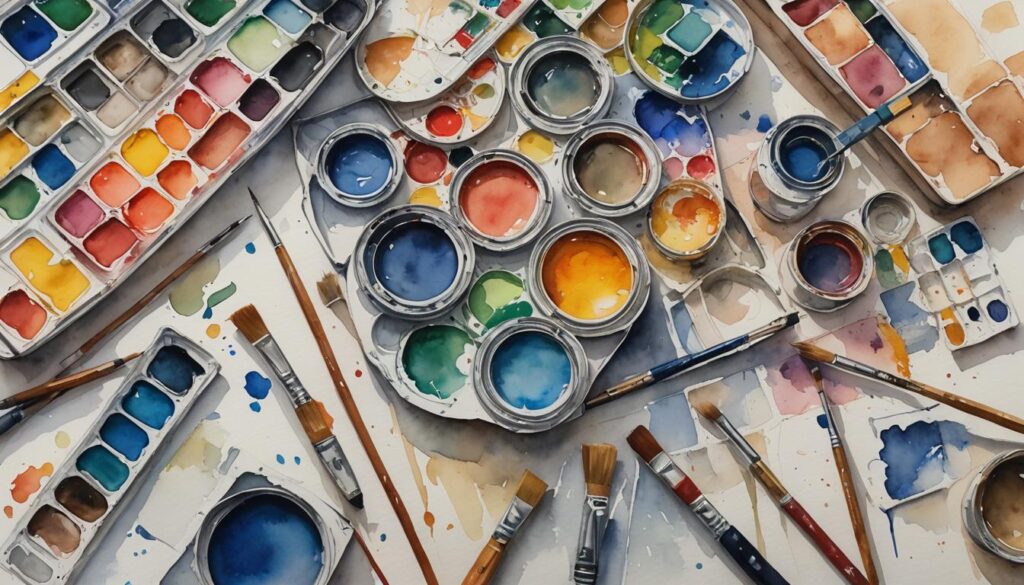Do your paintbrushes feel lost in the chaos of your workspace? Struggling to locate the right palette knife when creativity hits? Learning how to organize your painting tools isn’t just about tidiness – it’s about making your creative time more enjoyable and productive. This guide focuses specifically on artist painting tools and will walk you through everything you need to know about setting up an efficient painting station.

Why Organizing Your Painting Tools Matters
When you organize painting tools properly, you’re doing more than just cleaning up. You’re:
- Extending the life of your expensive brushes and materials
- Saving time during painting sessions
- Creating a more inspiring workspace
- Preventing paint contamination
- Making cleanup easier
Essential Categories of Painting Tools
Before diving into organization methods, let’s group your painting tools into main categories:
Paint Storage
- Tubes and bottles of paint
- Touch-up containers
- Palette wells and mixing trays
Brush Collection
- Different sized brushes
- Specialty brushes
- Cleaning tools
- Brush holders
Painting Accessories
- Palette knives
- Canvas preparation tools
- Easels and supports
- Reference material holders
Step-by-Step Organization Process

1. Sort and Assess Your Tools
Start by gathering all your painting tools in one place. This might seem overwhelming, but it’s crucial for proper organization. Remove any dried-up paints, frayed brushes, or damaged tools. Group similar items together based on how you use them in your painting process.
2. Create Designated Zones
Your workspace should have clear zones for:
- Active painting area (easel and current palette): This is where the magic happens, so it’s important to keep it free of unnecessary clutter to focus on your art.
- Clean brush storage
- Wet brush temporary storage
- Paint tube organization
- Tools in immediate use
- Reference materials and sketches
3. Choose Storage Solutions
Invest in appropriate storage options:
- Vertical brush holders to protect bristles
- Clear containers for sorting smaller tools
- Drawer organizers for paint tubes
- Wall-mounted systems for frequently used items
- Rolling carts for mobility
4. Implement a Cleaning Station
Set up a dedicated cleaning area with:
- Brush cleaning supplies
- Paper towels or rags
- Soap and cleaning solutions
- Dirty water container
- Brush drying rack
Smart Storage Ideas for Different Painting Tools
Brush Organization

Store brushes vertically with bristles pointing up to maintain their shape. This position prevents the bristles from bending or fraying, ensuring your brushes last longer and perform better during painting sessions. It’s an essential habit, especially for preserving the quality of delicate or expensive brushes. Use mason jars, brush rolls, or specialized brush holders. Group brushes by:
- Size
- Material type
- Painting medium
- Frequency of use
Paint Storage
Organize paints by:
- Color family
- Brand
- Medium type (oil, acrylic, watercolor)
- Frequency of use
Use clear containers or label everything clearly for easy identification.
Palette and Mixing Tools
Keep your palette knives and mixing tools:
- Clean and ready to use
- Sorted by size and type
- Easily accessible during painting
- Protected from damage
Maintenance Tips for Organized Painting Tools
Daily Habits
- Clean brushes immediately after use
- Return tools to designated spots
- Wipe down work surfaces
- Check paint tube caps are secure
Weekly Tasks
- Deep clean painting tools
- Assess supply levels
- Reorganize any misplaced items
- Clean storage containers
Monthly Maintenance
- Check for dried paint buildup
- Evaluate tool condition
- Adjust organization system as needed
- Deep clean storage areas
Making Your Organization System Last
Label Everything
Use clear labels for:
- Storage containers
- Paint tube organizers
- Brush holders
- Supply drawers
Create a Map
Document where everything belongs with:
- Written inventory
- Workspace diagram
- Photo references
- Quick-reference guide
Professional Tips for Organizing Painting Tools
Space-Saving Solutions
- Use vertical space with wall organizers, such as shelves or hanging bins, to keep tools within reach and reduce clutter.
- Install pegboards for flexible storage; they allow you to rearrange hooks and attachments for various tools. Including photos or diagrams of these solutions can further guide your setup.
- Choose stackable containers
- Implement fold-down work surfaces
More ideas here
Mobile Organization
If you paint in different locations:
- Pack a portable toolkit
- Use brush rolls for protection
- Select durable carrying cases
- Create mini-organizing systems
Troubleshooting Common Organization Challenges
Limited Space
- Maximize vertical storage
- Use door-mounted organizers
- Choose multi-purpose furniture
- Rotate seasonal supplies
Budget Constraints
- Repurpose household items
- Use mason jars for brush storage
- Create DIY organizers
- Start small and expand gradually
Conclusion
Organizing your painting tools doesn’t have to be complicated. Take the first step today, and you’ll find yourself more inspired and ready to create! Start with these basic steps and adapt them to your specific needs and workspace. Remember, the goal is to create a system that helps you paint more efficiently and enjoy your creative time fully. Keep refining your organization method until it becomes second nature – your future self will thank you during every painting session.
Quick Reference Checklist
Before you start organizing:
- Gather all painting tools
- Sort by category
- Remove damaged items
- Plan your space
- Choose storage solutions
- Implement your system
- Maintain organization daily
Remember, the best organization system is one you’ll actually use. Start small, be consistent, and adjust as needed. Happy painting!
FAQs: Organize Your Painting Tools
Q1: Why should I organize my painting tools?
Organizing your painting tools goes beyond just tidiness. It extends the life of your expensive brushes and materials, saves you time during painting sessions, creates a more inspiring workspace, prevents paint contamination, and makes cleanup easier.
Q2: What are the essential categories of painting tools I should consider when organizing?
You should categorize your tools into:
- Paint Storage: Tubes, bottles, touch-up containers, palette wells.
- Brush Collection: Different sized brushes, specialty brushes, cleaning tools, brush holders.
- Painting Accessories: Palette knives, canvas preparation tools, easels, reference material holders.
Q3: What’s the first step in organizing my painting tools?
Start by gathering all your painting tools in one place. Then, sort and assess them, removing any dried-up paints, frayed brushes, or damaged tools. Group similar items together based on how you use them.
Q4: How should I store my paintbrushes to keep them in good condition?
Store brushes vertically with bristles pointing up to maintain their shape and prevent bending or fraying. You can use mason jars, brush rolls, or specialized brush holders. Group them by size, material type, painting medium, or frequency of use.
Q5: What are some smart ways to organize my paint?
Organize paints by color family, brand, medium type (oil, acrylic, watercolor), or frequency of use. Use clear containers or label everything clearly for easy identification.
Q6: How can I keep my workspace clean and organized on a daily basis?
Implement daily habits like cleaning brushes immediately after use, returning tools to their designated spots, wiping down work surfaces, and ensuring paint tube caps are secure.
Q7: I have limited space for my painting tools. What are some space-saving solutions?
Maximize vertical storage with wall organizers, shelves, or hanging bins. Install pegboards for flexible storage, choose stackable containers, and consider fold-down work surfaces.
Q8: What if I have a limited budget for organizing supplies?
You can repurpose household items like mason jars for brush storage, create DIY organizers, and start small, gradually expanding your system as your budget allows.
Q9: How can I ensure my organization system lasts?
Label everything clearly (containers, paint organizers, brush holders, drawers). Create a map of your workspace with a written inventory, diagram, or photo references for quick identification. Regularly maintain your system with weekly and monthly tasks.



